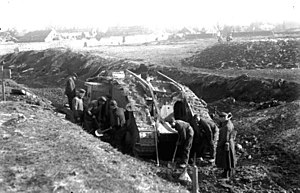Visualizing Historical Events


Motivation
Historical events, such as wars, battles, migrations, are notoriously difficult to visualize. Most textbooks show them on maps with arrows, but such maps only convey a small part of the story. Meanwhile, there has been several visualization techniques aimed at visualizing spatio-temporal data, such as space-time cubes, or successions of events over time, such as Soccer stories. The space-time cube is effective at showing time-evolving items, but maybe not causality. Successions of events for sports mainly assume that only one action occurs at a time, which is not the case for most historical events.
Understanding historical events is important for pedagogical reasons, but also to support the work of historians who tell stories about these historical events to explain them but lack good methods to convey a clear meaning to a non-specialist audience.
Goal
We are interested in investigating what visualization technique or combination of visualization techniques could effectively convey the meaning of these kinds of events. The internship can focus on one particular event, such as World-War I battle of Cambrai (Battle of Cambrai on Wikipedia). These historical events relate to space, time, and a series of smaller events with various outcomes.
Requirements
- The project will be implemented using D3 (d3.js) in HTML5/Javascript to work on any modern browser. The candidate should be familiar with this environment.
- The communication about this project will be in English since the internship will involve historians from all over Europe.
- Being interested by history is not strictly required but certainly a plus.